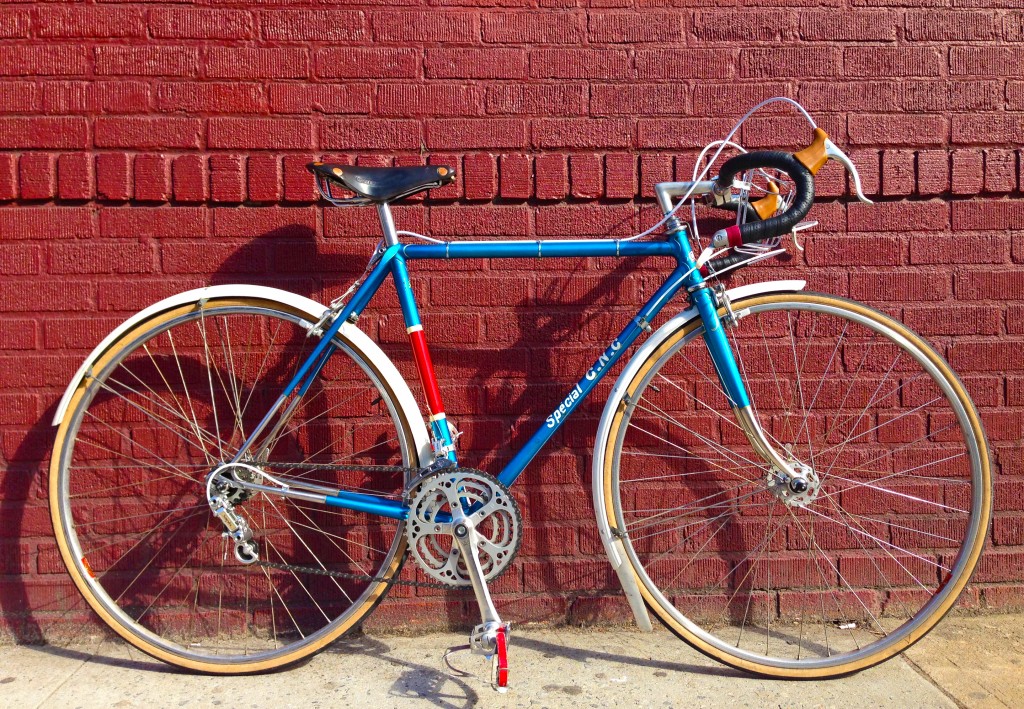
Cycles C.N.C. is a fairly obscure French brand that hand made exquisite custom bicycles for over fifty years, starting in the 1930’s. This particular example is one of their finest, with an all-Reynolds 531 frame and crisp lug work. I restored it over the holiday season, taking my time to get all of the little details correct. Read on for more information and history on this gorgeous bike!
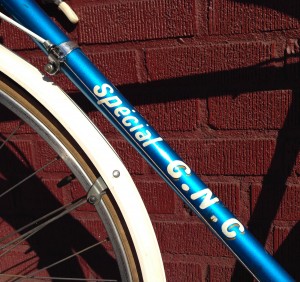 C.N.C. began life in 1936 as The Societe Fletcher-Ducret, owned by Raymond Fletcher. It was a small shop in Paris located at 112 Boulevard de la Chapelle. They had a small retail trade, but made most of its money making special frames for many French professional riders. Most of these custom bicycles were re-badged with the make of the company that sponsored the riders’ teams. Fletcher also suppied the top riders of quite a few of the eastern-bloc countries in the 50s through to the 70s, including Russia and Poland.
C.N.C. began life in 1936 as The Societe Fletcher-Ducret, owned by Raymond Fletcher. It was a small shop in Paris located at 112 Boulevard de la Chapelle. They had a small retail trade, but made most of its money making special frames for many French professional riders. Most of these custom bicycles were re-badged with the make of the company that sponsored the riders’ teams. Fletcher also suppied the top riders of quite a few of the eastern-bloc countries in the 50s through to the 70s, including Russia and Poland.
No one seems to have any idea of what the abbreviation stands for. It is believed that the Special-CNC frames were the very top of the range, possibly custom frames, hand-brazed by one of the top three builders employed by the company. One of these builders was Rene Andre, a noted “constructeur” and contemporary of Rene Herse who also built bespoke bicycles under his own name.
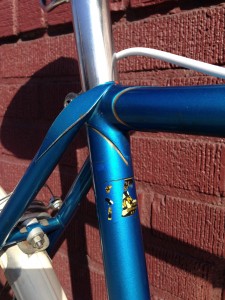 I am really impressed with the build quality of this bike. It’s made of Reynolds 531 tubing, with carefully thinned and filed lugs. The logos are all hand-painted, adding to the sense that this was a carefully built custom machine. It’s built for a smaller man or woman, with a 52cm center-to-top seat tube and a 52cm center-to-center top tube.
I am really impressed with the build quality of this bike. It’s made of Reynolds 531 tubing, with carefully thinned and filed lugs. The logos are all hand-painted, adding to the sense that this was a carefully built custom machine. It’s built for a smaller man or woman, with a 52cm center-to-top seat tube and a 52cm center-to-center top tube.
I kept it nearly original – just swapped out the bars, stem, saddle, brake hoods, and replaced the cables & housing. It came with a lame townie bar setup and Kalloy stem that was obviously added later, so I gave it a nice Belleri stem and G.B. randonneur bars. I switched the Ideale saddle for a Brooks Pro of the same vintage to match the new black leather tape. It came with a set of white Bluemels fenders that I kept on it. There are tire savers mounted inside the fenders, a very cool little detail. The wheels are Maillard 700 hubs laced to MAVIC tubulars, and a 5-speed Maillard “corncob” freewheel.
The chrome shined up lovely and my first experiment with Turtle Wax rubbing compound restored a lovely luster to the paint. I rode it to work today, and although it’s a little small for me, it handles like a dream. The Simplex SLJ groupset and matching barcons shift smooth as butter.
Check out the Gallery below for more pictures!

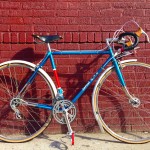
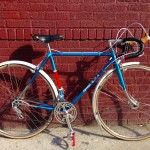

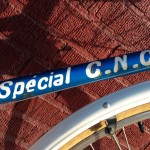
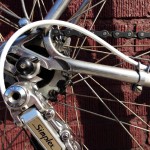

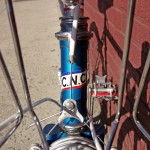
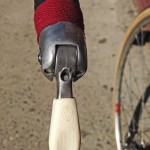
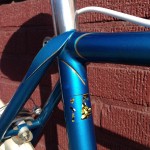

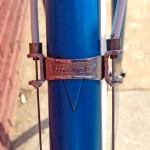
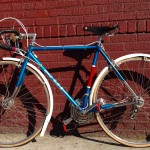
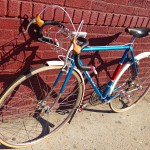

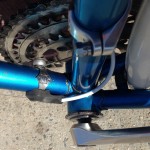

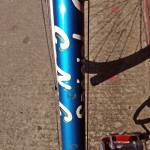
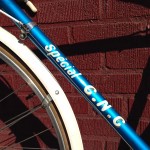
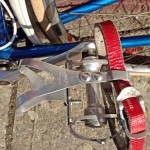
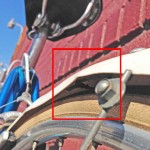
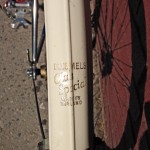
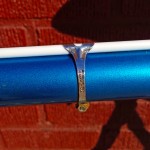
CNC stands for Comptoir National du Cycles (national cycle consortium)
The noun ‘Comptoir’ means, in this context, something like ‘DEPOT’ or ‘Trading Post’. Fletcher owned a large wholesale compant that supplied all manner of cycle parts including several bfands ‘everyday’ type of bikes as well as hand-built frames.
The frame of your cycle is probably one made by Bernard Carre the fairly celebrated frame-builder based at Montreuil sur Seine just outside Paris. The pointed oval overlapping top-eye plates on the seat-stays are typical of his work. Carre made a lot of frames on a sub-contracted basis for shops and firms all around France.
Thank you, Norris! Your contribution is very much appreciated! I’m honored that you took the time to share this information and excited to hear that Bernard Carre might have built this frame.
I purchased my first lightweight, second hand. in 1954 which had been resprayed red, I still have it. It had no badges or transfers on it. The vendor told me that it was a CNC, built in France in 1951, it has thick seat stays but not wrapped around the top tube as much as on your frame, the lugs are similar but more ornamental.
There is a gear lever boss on the RH side of the down tube with a double pulley wheel on the bottom bracket, so the “double clanger” was operated on the chain ring side. I believe that this was to accommodate a Huret gear changer set and that the gear lever was a twin lever set fitting into the gear lever boss.
Thought this might be of interest to you.
Hello, i have just been doing a little google search and found your bike as it has very similar hand painted decals to yours. Mine is equiped with huret gears and stronglight cranks and i thought it was more a bike from the sixties. Does yours have campagnolo dropouts?
I am just cleaning up my frame which is a lovely blue underneath the grime.
A nice bike for a skip find.
I have a CNC SPECIAL that belonged to my brother.He had a bicycle shop in the early 70’s. I no longer ride it and would consider selling it. Can send pictures if anyone is interested. Thanks,Mark
Mark Browning, I would at least like to see some pictures. Since this site doesn’t have a reply feature, you can find me on BikeForums as “ex pres.” I own a ’72 mid-range CNC.
In 1963 I visited that shop in Paris, spoke with M Fletcher, and a few days later rolled out on a custom built CNC. It is similar in paint and graphics to that pictured, with Reynolds 531, two plateaus, no fenders, Simplex plastic derailleur (new at the time), Brooks saddle, Mafac brakes, etc. This was a road bike and I traveled on it in Europe and rode it later here in California. It now needs to be rebuilt and I will appreciate any information as to where parts may be found. Thanks!
I have a original CNC Special that I got as a kid. I got it in the 70’s. It needs some work but is in good condition. How much are these bikes worth now? I have no idea, please advise. Thanks for your input.
The CNC marque is not well known in the USA, so you would first need to do some research to figure out the model and tubing used. Only the high-end, handbuilt models will have notable value. If it is a high-end model, the next step would be to try to figure out the year of manufacture and the builder. If you can prove that it was built by Rene Andre, for example, that will add significant value. Determining the builder is tricky, but sometimes signature stylistic elements like the seatstay cap treatment are a giveaway. I would suggest checking eBay and especially eBay France (ebay.fr). You’re more likely to find CNC bikes on eBay France and use those listings to determine the model and rough value of your bike. You can also searchv intage French bike forums like TonTonVelo. Good luck!
Hi Peter, it depends on the parts that you are looking to replace and whether you want to replace them with the identical part or a modern equivalent. There are some great shops in California (especially San Francisco) that specialize in bikes like yours. I recommend https://www.boxdogbikes.com/ or the Jitensha studio https://www.jitensha.com/. There are also a number of specialized manufacturers of modern reproductions of vintage parts, like Velo Orange and Rene Herse http://www.renehersecycles.com. If you want to replace the original parts with the same items, look on eBay for “New old Stock” or “NOS” parts which means they are 40+ year old but never-used. Prepare to spend a premium price for those!